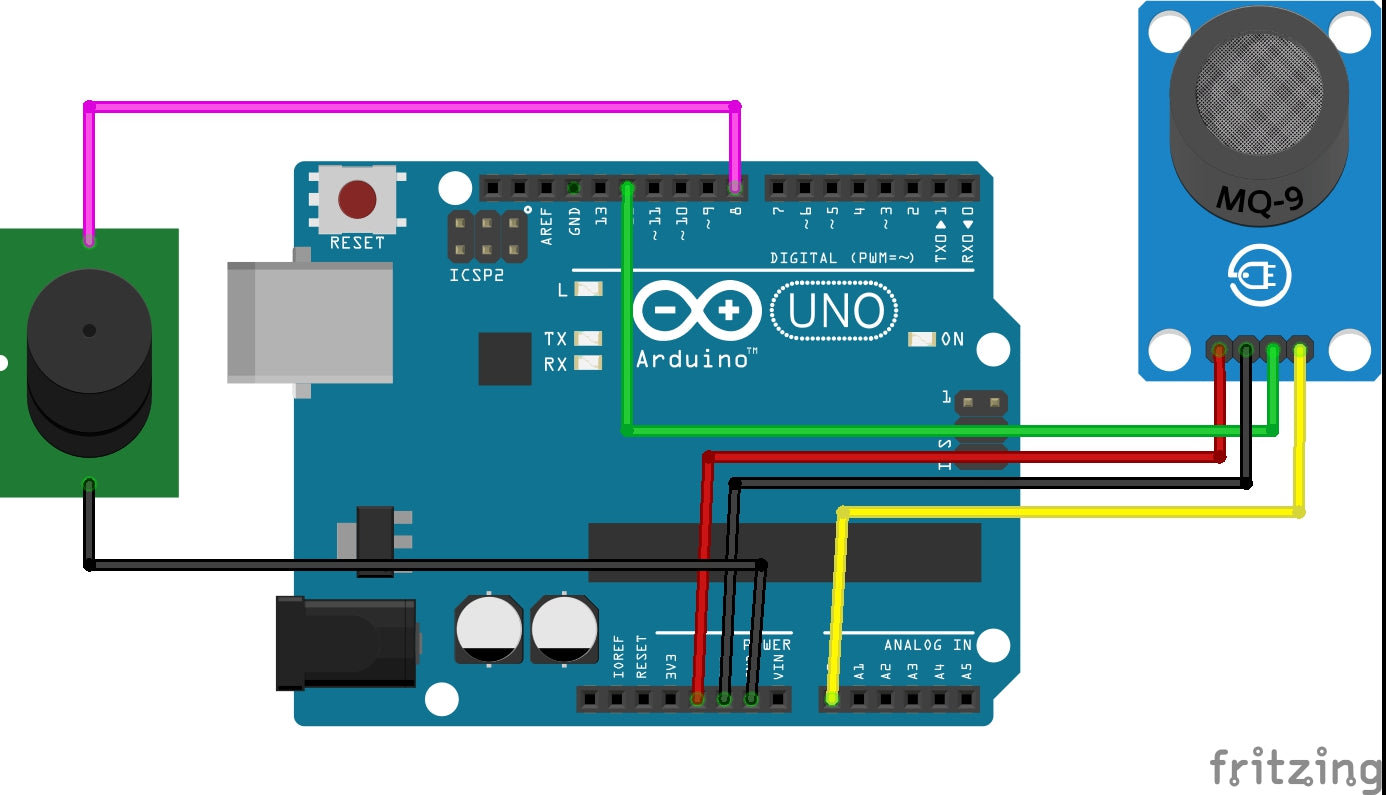How to Interface MQ9 Gas Sensor with Arduino
The MQ9 Gas Sensor is a member of the MQ Gas Sensors family. It operates as a Metal Oxide Semiconductor (MOS) gas sensor primarily designed to identify Carbon Monoxide, Methane, and Propane. It is capable of detecting concentrations of LPG, Propane, Hydrogen, Carbon Monoxide, and Methane gases. The sensor contains a sensitive element, primarily composed of aluminum-oxide-based ceramic coated with Tin dioxide (SnO2), enclosed within a stainless-steel mesh. When gases come into contact with this element, it causes a change in its electrical resistance. This alteration is then measured to determine the concentration of the gases. The sensor features a small heating element that preheats the sensor to bring it into the operational range.
It is widely used in applications involving the detection of gas leaks in pipelines and alarms for home safety.
Specifications:
- Operating Supply voltage: 5 volts
- Target Gas: LPG, Propane, CO, and Methane (CNG)
- Concentration Detection Range: 200 to 10000 ppm (parts per million) for methane (CH4)
- Heater consumption: less than 350mw
- Load resistance: 20KΩ
- Operating Temperature: Within a range of -10°C to 50°C
MQ9 Sensor Pinout & Parts Description:
It typically has four pins: Analog, Digital, GND, and VCC.

VCC (Heater): This is the power supply pin for the sensor that usually operates at 5v. It's used to provide power to the sensor's internal heater element.
GND (Ground): This is the ground or common reference voltage for the sensor.
AOUT (Analog Output): This pin provides an analog voltage output that varies depending on the concentration of the gas detected by the sensor. You can connect this pin to an analog input on a microcontroller to read the gas concentration.
DOUT (Digital Output): The MQ9 sensor has a digital output pin that provides a high or low signal based on a predefined gas concentration threshold value which can be adjusted using an inbuilt Pot. This can be used for simple gas detection without analog reading.
Components Required for this Arduino MQ9 Sensor Project:
- MQ-4 Methane Gas Sensor Module
- Small Piezoelectric Buzzer - 5V Active Buzzer
- Arduino Uno R3
- Jumper wires
Arduino MQ9 Gas Sensor Circuit Diagram

The MQ-9 sensor can be easily interfaced with Arduino, only requiring connections of four terminals of the sensor. The buzzer acts as a triggering alarm to confirm that the sensor detected gas.
To set up the MQ-4 sensor module, follow these steps:
- Link the VCC pin to the Arduino's 5V connection.
- Attach the GND pin to the Arduino's Ground (GND).
- Connect the A0 pin to one of the analog pins on the Arduino, like A0.
- Connect the D0 pin to a digital pin on the Arduino, for example, pin 12.
For the buzzer connection:
- Connect the positive (+ve) terminal of the buzzer to a digital pin on the Arduino, such as pin 8. Avoid connecting it to pin 13 to prevent the buzzer from beeping when the Arduino starts.
- Connect the other terminal of the buzzer to the ground (GND) of the Arduino.

Arduino MQ-9 Gas Sensor Code
Inside the code, we have set up all the pins initially. The code collects both analog and digital input data from the sensor. Additionally, it includes a buzzer that beeps when the threshold value changes upon detecting gas. The analog and digital values are then displayed on the serial monitor.
Demonstration of MQ-9 gas sensor with Arduino
- Calibrate the sensor digital pin by adjusting the Potentiometer on the sensor. So, the threshold value changes when the sensor detects the gas.
- The values can be monitored on a Serial monitor.

Hope you liked and enjoyed the project and learned something valuable from it. If you have any questions, you can leave them in the comment section below.